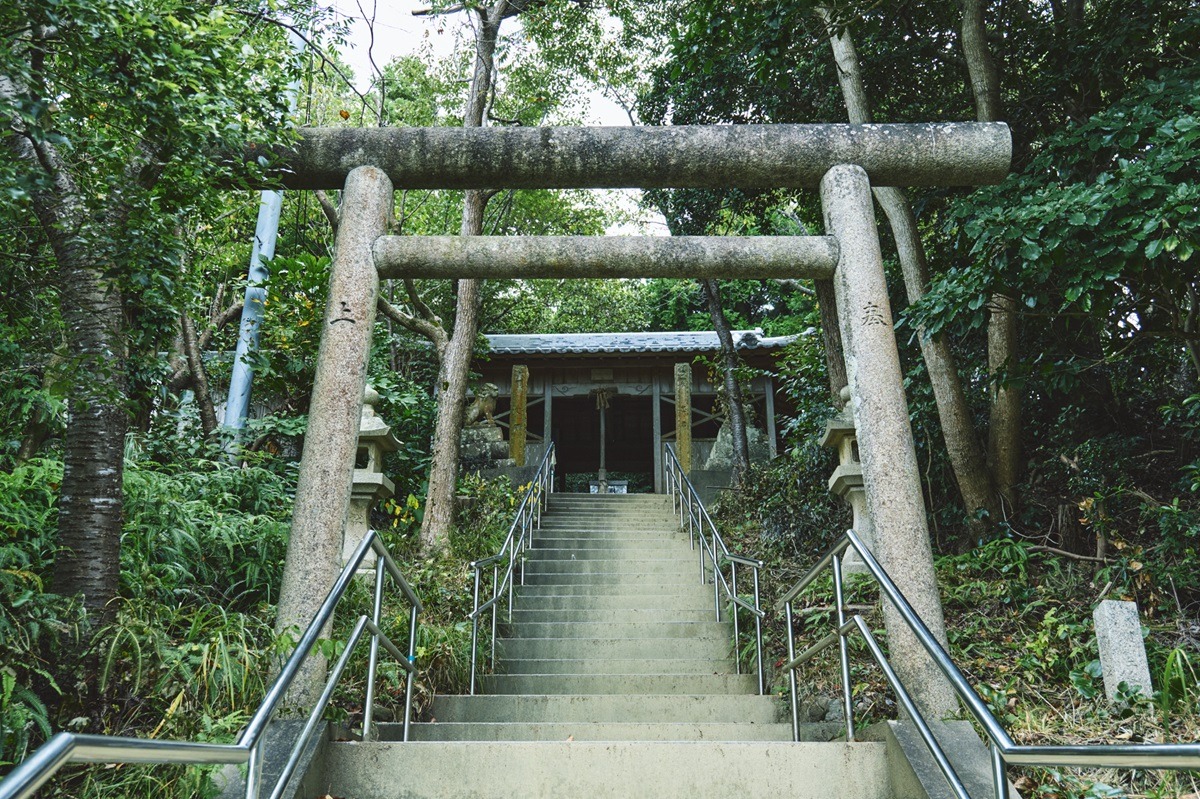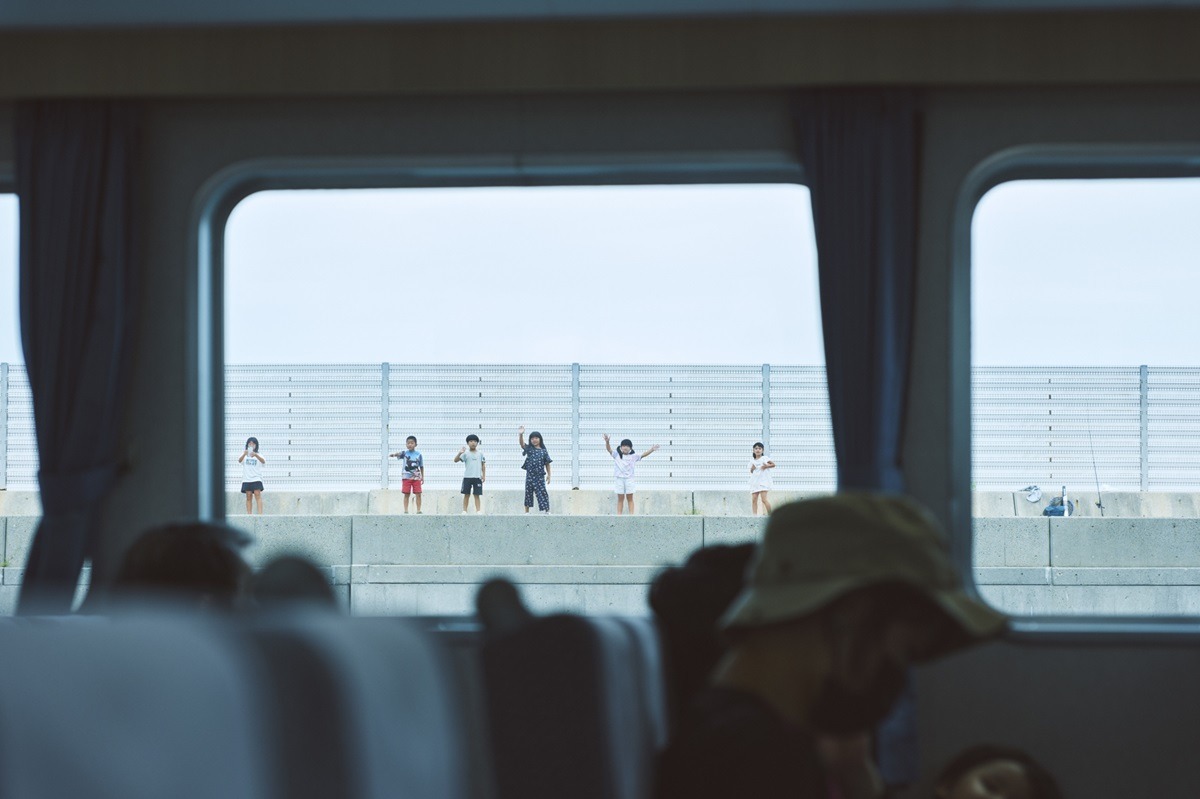- History / Culture
No.f_0024
From the Land of Beginnings to the Future—Exploring Hyogo’s Origins on the Road to Expo 2025
Hyogo Prefecture, nestled between mountains and sea, boasts cities with unique identities, from the cosmopolitan port city of Kobe to the historic hot spring town of Arima at the foot of Mount Rokko—one of Japan’s famed 100 mountains (hyaku meizan). Beyond their distinct charm, these towns are home to the cultural origins that have shaped Hyogo's living traditions: port culture, onsen culture, sake brewing, and the mythological roots of Japan. Each city has its own story of origin, and the knowledge and values that have been passed down through generations offer insights for shaping the future. These enduring legacies resonate with the theme of Expo 2025 Osaka, Kansai: “Designing Future Society for Our Lives.” Experiencing Hyogo’s origins firsthand adds new depth and meaning to your visit to the Expo.
A Port That Shaped a City: Kobe’s Distinctive Cosmopolitan Culture
 The view from Kobe Harborland
The view from Kobe Harborland
Since opening its port in 1868, Kobe has been a gateway for European trade routes, becoming a melting pot of Western influences. European merchants established residences and trade hubs, creating a blend of Western culture that remains distinctive today. The bustling Kobe Port waterfront, now a center of international trade, is also home to popular tourist spots like Meriken Park and Kobe Harborland.
 The historic Kobe Former Foreign Settlement Building No. 15
The historic Kobe Former Foreign Settlement Building No. 15
Kobe’s Former Foreign Settlement (kyoryuchi) in the Chuo Ward was developed using European urban planning techniques. The area’s brick and stone streets, reminiscent of the past, now house fashionable boutiques, offering both historical charm and modern shopping experiences.
 Grill Ippei Shinkaichi Honten
Grill Ippei Shinkaichi Honten
Western-style cuisine in Japan evolved after the port’s opening, as Japanese chefs adapted Western dishes to local tastes, creating what is known in Japan as yoshoku (“Western food”). Classics like beef stew, omurice, and beef cutlets have become Kobe staples.
Grill Ippei, established in 1952, is a well-loved Western-style restaurant known for its signature demi-glace sauce, a closely guarded family recipe passed down through four generations. At the Shinkaichi Honten location, head chef Zhou Jianming prepares each dish with care, offering up meals that have become a cherished treat for those seeking a touch of luxury.

The port’s influence also shaped Kobe’s confectionery scene. Since the 1910s, local bakers have been refining Western sweets, resulting in the highest number of confectioneries per capita in Japan. Famous Kobe-born sweets include Juchheim’s baumkuchen, Kobe Fugetsudo’s gaufre wafers, Goncharoff’s Corbeille chocolates, Hontaka Sagoya’s écorces, and Morozoff’s Broadland cookies—beloved local delicacies that make perfect souvenirs.
 Nankinmachi, Kobe’s Chinatown
Nankinmachi, Kobe’s Chinatown
Adjacent to the Former Foreign Settlement lies Nankinmachi, Kobe’s Chinatown. When the port opened, Chinese nationals, unable to reside in the Former Foreign Settlement due to treaty restrictions, established their own vibrant community. The bustling streets of Nankinmachi, filled with shops and eateries, became known as a place where “you can find just about anything.” At night, the lantern-lit streets exude a magical atmosphere, making it a favorite photo spot.
BOOK YOUR STAY IN KOBE
Arima Onsen: One of the World’s Rare, Non-Volcanic Hot Springs

Located in Kobe City’s Kita Ward, Arima Onsen stretches across the northern foothills of Mount Rokko, near the Momijidani (Maple Valley) area. Conveniently located less than a 30-minute train ride from central Kobe and around 60 minutes from Osaka, it is frequently mentioned in ancient texts and celebrated alongside Dogo Onsen in Ehime and Shirahama Onsen in Wakayama as one of Japan’s Three Ancient Springs—a sanctuary of Japan’s centuries-old hot spring culture. In Japan’s ancient hot spring culture, traditional hot springs were valued not only for relaxation but also for their therapeutic properties, giving rise to what is known as toji—a form of health therapy involving extended stays for healing and rejuvenation. Today, Arima continues to attract visitors seeking both relaxation and cultural immersion. What distinguishes Arima Onsen are its two distinct water types: the rich amber kinsen (golden waters) and the clear ginsen (silver waters). Kinsen is rich in iron, resulting in its characteristic reddish-brown hue and offering a warming, mineral-rich soak. In contrast, ginsen is clear, smooth on the skin, and known for its light, refreshing sensation.
 A picturesque view of Arima Onsen town
A picturesque view of Arima Onsen town
While most hot springs are volcanic in nature, formed by heat from volcanic activity, Arima Onsen and nearby hot springs such as Takarazuka Onsen, Takeda Onsen, and Nada Onsen fall into a rare category known as non-volcanic hot springs. These are referred to as “Arima-type” onsen. Beneath the area lies the Philippine Sea Plate, which began subducting around 25 million years ago. At a depth of approximately 60 kilometers, water is forced out of the plate, rising to the surface and forming these hot springs. This geological process makes Arima Onsen and its neighboring springs a treasured global rarity.
 The Arima Onsen Shopping Street
The Arima Onsen Shopping Street
Arima Onsen is renowned for its charming streets, attracting visitors of all ages. One of its highlights is the Arima Onsen Shopping Street, lined with numerous restaurants and souvenir shops, perfect for a leisurely stroll. For an even deeper experience of the town’s nostalgic ambiance, don a traditional yukata—available for rent at local inns—and wander through the streets, fully immersing yourself in the timeless atmosphere of this historic hot spring town.
 Arima Tenjinja shrine
Arima Tenjinja shrine
Just a short walk from the Arima Onsen Shopping Street, Arima Tenjinja shrine houses a natural hot spring source, known as the Tenjin Sengen , within its grounds—another testament to Arima’s deep-rooted onsen culture.
 The Kin no Yu hot spring
The Kin no Yu hot spring
Visitors can choose between numerous hotels and ryokan for overnight stays or enjoy a day trip with a soak at one of Arima’s public bathhouses. Kin no Yu, near the Arima Onsen Shopping Street entrance, is famous for its iron-rich kinsen waters and serves as a landmark of the town.
 The Gin no Yu hot spring
The Gin no Yu hot spring
For those seeking the refreshing ginsen experience, Gin no Yu offers carbonated and radium-infused baths just a short walk from the main Arima Onsen Shopping Street, providing a soothing retreat amid Arima’s timeless charm.
BOOK YOUR STAY IN ARIMA
Experience Hyogo’s Distinct Sake Culture in Japan’s Top Sake-Producing Region, Nada Gogo
 Seishu refined sake from Nada Gogo
Seishu refined sake from Nada Gogo
Nada Gogo refers to a coastal area in Kobe City and Nishinomiya City known for its high concentration of sake breweries. Comprised of five distinct regions—Nishi-Go, Mikage-Go, Uozaki-Go, Nishinomiya-Go, and Imazu-Go—this area is widely regarded as Japan’s top sake-producing region, with a history tracing back to the 14th century. Here, sake culture is deeply embedded in the whole community.
 Traditional sake barrels
Traditional sake barrels
The Nada Gogo area flourished during the Edo period when sake was transported to Edo (modern-day Tokyo) in wooden cedar barrels. During the voyage, the sake absorbed the cedar aroma, adding depth to its flavor, earning it the nickname “Nada no sake” and widespread popularity in Edo.
 Yamada Nishiki, Hyogo’s native sake rice.
Yamada Nishiki, Hyogo’s native sake rice.
Hyogo Prefecture is also renowned for developing Yamada Nishiki, a premium rice variety ideal for sake brewing. Particularly in the Kita-Harima region, Yamada Nishiki is cultivated with exceptional quality, making it the finest in Japan. Hyogo’s famed breweries use this superior rice, drawing tourists to popular sake tasting tours such as “Sake Tasting at Local Breweries Kobe,” a hit among visitors.
 Barrel-making at Taru Sake Meister Factory
Barrel-making at Taru Sake Meister Factory
At the Kiku-Masamune Sake Brewery Museum in Kobe’s Higashinada district, visitors can explore the 360-year history of this esteemed brewery. The museum houses a workshop called the Taru Sake Meister Factory, where artisans craft traditional sake barrels, offering visitors a rare glimpse into the craftsmanship behind sake production.
 Sake Brewing Exhibit Room at the Kiku-Masamune Sake Brewery Museum.
Sake Brewing Exhibit Room at the Kiku-Masamune Sake Brewery Museum.
The Kiku-Masamune Sake Brewery Museum also features a Sake Brewing Exhibit Room, showcasing traditional sake-making techniques and tools. The historic brewing equipment offers an appreciation for Japan’s cultural heritage and the intricacies of sake craftsmanship—not to mention, guests can enjoy tasting and purchasing sake on-site, making this a must-visit for enthusiasts.
Create Your Own Traditional Komodaru Barrel
 Komodaru barrels at Kishimoto Kichiji Syouten.
Komodaru barrels at Kishimoto Kichiji Syouten.
During the Edo period, komodaru barrels were crafted as cushioning material to protect sake during transport. At Kishimoto Kichiji Syouten, visitors can delve into the history of komodaru, tour the factory, and participate in interactive experiences such as kagami biraki (barrel opening) and painting mini komodaru barrels.
A Mythical Journey: Discovering Nushima’s Sacred Rocks by Boat

Nushima, an island steeped in mythology, is believed to be the birthplace of Japan in the national creation myth. Located at the souhernmost tip of Hyogo, this mystical island is surrounded by distinctive rock formations and reefs, best explored on the Onokoro Cruise. This guided tour aboard a fishing vessel offers breathtaking views of Nushima’s sacred rocks, accessible only by sea.
 Go Onoyama, cruise guide
Go Onoyama, cruise guide
With a population of just 300, over half of Nushima’s residents are involved in fishing. The Onokoro Cruise, led by local fishers, takes visitors on a complete tour around the island, navigating its perilous reefs with ease.
 Anaguchi Cave
Anaguchi Cave
Among the highlights is Anaguchi, a deep cave carved into an 80-meter-high cliff known as Byobuiwa (“Folding-Screen Rock”). At approximately 50 meters deep, it is said to be the model for the “entrance to the underworld” in Japan’s oldest surviving chronicle, the Kojiki.
 Kamitategami-iwa Rock
Kamitategami-iwa Rock
Another must-see along the of roughly 10-kilometer cruise route is Kamitategami-iwa, a towering 30-meter rock formation that appears midway through the tour. Legend associates the rock with the deity Izanagi, paired with its counterpart nearby, Shitategami-iwa, symbolizing Izanami. Legend has it that these rocks are also known as Amenomihashira (Heavenly Pillar), used by the divine couple when they united in marriage and began creating the land. Locals affectionately refer to the formation as Tategami-san.
 Onokorojima Jinja, a shrine dedicated to Izanagi and Izanami, the deities of creation.
Onokorojima Jinja, a shrine dedicated to Izanagi and Izanami, the deities of creation.
The island also boasts numerous shrines and temples linked to creation mythology, including Onokorojima Jinja.


BOOK YOUR STAY ON AWAJI ISLAND
In preparation for the Expo 2025 Osaka, Kansai, Hyogo Prefecture is transforming itself into a living pavilion through the Hyogo Field Pavilion initiative. This project showcases the region’s charm, with locals leading the way in sharing their cultural and natural treasures. One of the standout programs is the Onokoro Cruise, offering visitors not only breathtaking views but also the opportunity to connect with the island’s residents, gaining firsthand insight into their way of life and traditions.
Date : 2024.12.17






